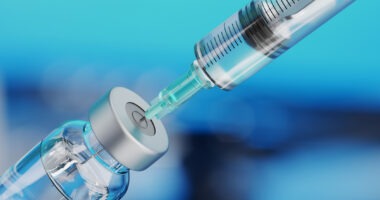ROI in Pharma R&D Falls in Post-Pandemic Market
A recent analysis by the management consultancy firm, Deloitte, shows that the bio/pharma industry’s return on investment (ROI) in R&D has fallen in the post-pandemic market. Projected ROI in pharma R&D in 2022 fell to 1.2%, the lowest ROI observed in the 13 years since the firm has conducted the study.
Declining return on investment on pharma R&D
Research and development (R&D) productivity is a crucial measure of the performance of the bio/pharmaceutical industry as it seeks to achieve a strong return on investment (ROI) on the billions it spends on new product development. Looking at ROI on pharma R&D in 2022 shows declining returns with higher R&D costs.
Since 2010, the management consulting firm, Deloitte, has annually evaluated the industry’s performance in a series of annual reports, Measuring the Return from Pharmaceutical Innovation. In 2022, the average projected ROI on pharma R&D fell to a low of 1.2%, the lowest the industry has seen since Deloitte has conducted its research beginning in 2010. The study is based on the projected ROI from the late-stage pipelines from top 20 global bio/pharmaceutical companies.
The low ROI on pharma R&D is a reversal of fortune for the industry, which experienced an historic rise in R&D productivity in 2021, when it reached 6.8%, but ROI on pharma R&D declined 5.6 percentage points from 2021 to 2022, when ROI on pharma R&D fell to 1.2%. This was likely driven primarily by the successful approvals of high forecast value drugs and medicines (especially COVID-19 vaccines and treatments) and a gap in late-stage pipeline assets that would replace those that were commercialized, according to the study from the Deloitte Center for Health Solutions, the research arm of Deloitte’s life sciences and health care practices.
“After an unprecedented increase in ROI in 2021, we anticipated a decline in 2022, but this steep drop is greater than what many in the industry expected,” said Pete Lyons, US Life Sciences Sector Leader, and Principal, Deloitte Consulting LLP, in commenting on the 2022 report. “A combination of factors influenced this decline and reflects not only challenges for the industry but also where there are opportunities. Last year [2021] shed light on what is possible, and this year [2022], we’re seeing that there is more work to be done to create lasting change and deliver on the collective mission to make the world a healthier place.”
Deloitte’s analysis shows the forecast average peak sales per asset—the amount of money a drug is expected to generate annually— have also declined, falling from $500 million in 2021 to $389 million in 2022, a level also below the forecast average peak sales per asset of $422 million in 2020. With COVID-19 emergency use authorization (EUA) assets excluded, the average peak sales forecasts fell from $340 million in 2021 to $284 million in 2022.
The report also showed the estimated average cost of developing a new drug, including the cost of failure, rose by $298 million to $2.3 billion in 2022, specifically from $1.986 billion in 2021 to $2.284 billion in 2022. In total, the 20 bio/pharma companies analyzed in the study spent $139 billion on R&D in 2022, a decrease of 2% compared to 2021 ($141 billion).
Internal assets drive more than half of expected revenue
The research also showed that an increase in the proportion of forecast revenue from in-house (i.e., self-originated assets) among the top 20 bio/pharma companies analyzed in the study: from 29% in 2021 to 51% in 2022. This increase was largely driven by the addition of five new high value assets in the R&D pipeline with potential blockbuster status. At the same time, the proportion of forecast revenue from co-developed assets has almost halved year-on-year, falling from 46% in 2021 to just 18% in 2022. This decline is due to a shift in product mix. A high-proportion of co-developed assets in 2021 were from high-value COVID-19 products and a high-value neurological asset that was fast-tracked and has since been commercialized.
Product innovation from outside the top bio/pharma companies
Another measure of product innovation in the bio/pharma industry is to look at the number of new drug approvals. Continuing a recent trend, in 2022, the large bio/pharmaceutical companies’ share of new drug approvals was surpassed by small to mid-sized bio/pharmaceutical companies (1). Although the number of new drug approvals does not reflect the market potential of a given drug, it is an important measure of product innovation. For purposes of this analysis, new drug approvals refer to new molecular entities or new therapeutic biologics approved by the Center for Drug Evaluation and Research of the US Food and Drug Administration (FDA). It does not include vaccines, allergenic products, blood and blood products, plasma derivatives, cellular and gene therapy products, or other products approved by the FDA’s Center for Biologics Evaluation and Research.
In 2022, 13, or 35% of the 37 new drug approvals by FDA’s CDER were from the large bio/pharmaceutical companies: seven biologics and six small-molecule drugs. Bristol-Myers Squibb led all companies with three new drug approvals, followed by Roche with two new drug approvals. Eight large bio/pharmaceutical companies each had one new drug approval: AstraZeneca, Boehringer Ingelheim, Eli Lilly and Company, Gilead Sciences, Johnson & Johnson, Novartis, Pfizer, and Sanofi.
With the large bio/pharma companies accounting for only 13, or 35% of the new drug approvals in 2022, small to mid-sized bio/pharma companies accounted for 24, or 65% of the 37 new drug approvals. Small to mid-sized companies accounted for 16 small-molecule new drug approvals and for eight new biologic drug approvals. Small-molecule drug approvals were from Agios Pharmaceuticals, Alnylam Pharmaceuticals, Amply Pharmaceuticals, CTI BioPharma, Dermavant Sciences, Guerbet, Idorsia, Mallinckrodt, Marinus Pharmaceuticals, Mirati Therapeutics, Mycovia Pharmaceuticals, Phathom Pharmaceuticals, Polarean, Rigel Pharmaceuticals, Santen Pharmaceutical, and Taiho Oncology. On the biologics side, new drug approvals were from Bioverativ Therapeutics, Immunogen, Immunocore, MediWound, Provention Bio, Revance Therapeutics, Spectrum Pharmaceuticals, and TG Therapeutics.
Reference
1. P. Van Arnum, “New Drug Approvals in 2022: Making the Mark,” DCAT Value Chain Insights, January 5, 2023.








